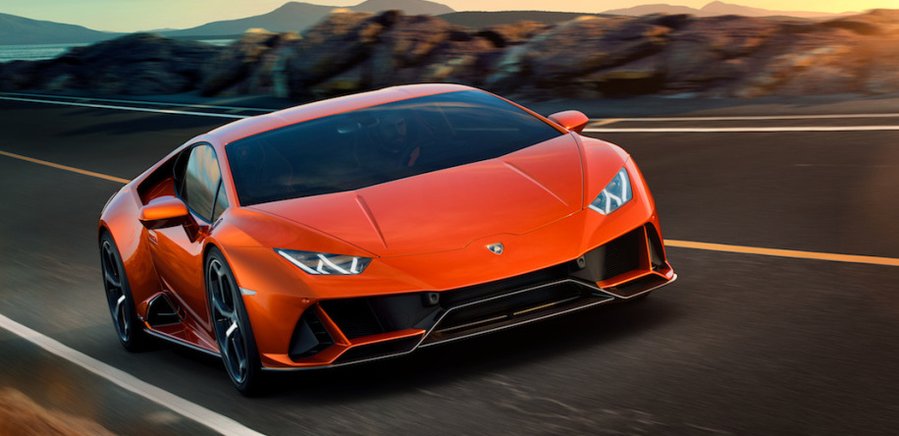Lamborghini unleashes the refreshed Huracan Evo with Performante V10

After a series of teaser shots, Lamborghini has let the midcycle refresh of its Huracán out of the pen, with a new predictive-logic vehicle dynamics control system to go along with its more aerodynamic redesign.
New photos show the sports car in full, with a new front bumper featuring a front splitter and integrated wing, with larger air intakes. Lamborghini's hexagon design references are evident in the windows, 20-inch wheels and the new side air intakes. We also get a full look at the redesigned rear, with the twin exhaust tips up high flanking the license plate and an integrated, slotted spoiler. Lamborghini says aerodynamic improvements, which also include the underbody, improve the Evo's downforce and aerodynamic efficiency more than five times over the Huracán's first generation.
It's powered by the Performante 5.2-liter naturally aspirated V10 that's been uprated to 640 horsepower and what the brand says is "an emotional and powerful sound" with titanium intake valves and a refined, lightweight exhaust system. It produces 442 pound-feet of torque at 6,500 rpm, does 0-62 mph in just 2.9 seconds (two tenths of a second faster than before), and has a top speed of more than 202 mph.
New on the all-wheel-drive Huracán Evo is rear-wheel steering and a torque vectoring system that works the four wheels. There's also the Lamborghini Dinamica Veicolo Integrata, a central processing unit that integrates all of the car's dynamic systems and setup to anticipate the next move and the driver's needs to respond with the appropriate driving dynamics. It's also got an enhanced 2.0 version of the Lamborghini Piattaforma Inerziale set of accelerators and gyroscope sensors, with improved precision at monitoring in real-time the lateral, longitudinal and vertical accelerations and also roll, pitch and yaw rates. Also improved is the magnetorheological suspension, which instantaneously adapts the damping based on inputs from the LPI.
A new advanced traction-control system allows traction to be directed to a single wheel when needed, and steering is enhanced to provide higher responsiveness in corners, coupled with the rear-wheel steering to ensure agility at low speeds and maximum stability in high-speed cornering and under braking. Three driving modes are offered: Strada, Sport and Corsa race-track mode.
Inside the cabin, there's a new 8.4-inch touchscreen on the center console just above the start button that controls functions like seats, climate, infotainment and the LDVI system in real time. The interior gets a mix of leather and Alcantara, with Arancio Dryope details to match the new Arancio Xanto four-layer body color.
Deliveries will start in spring, starting at $261,274, with carbon-forged composites and carbon skin materials as optional interior upgrades.



Related News


